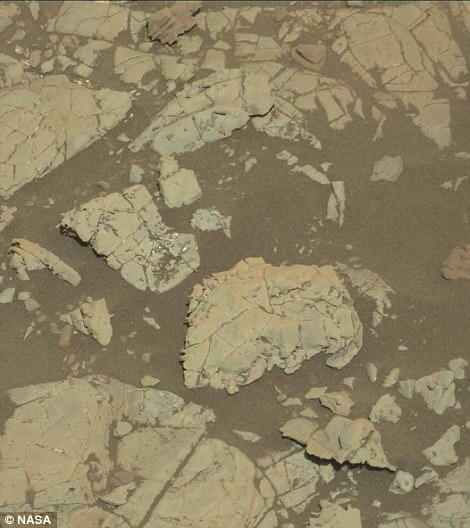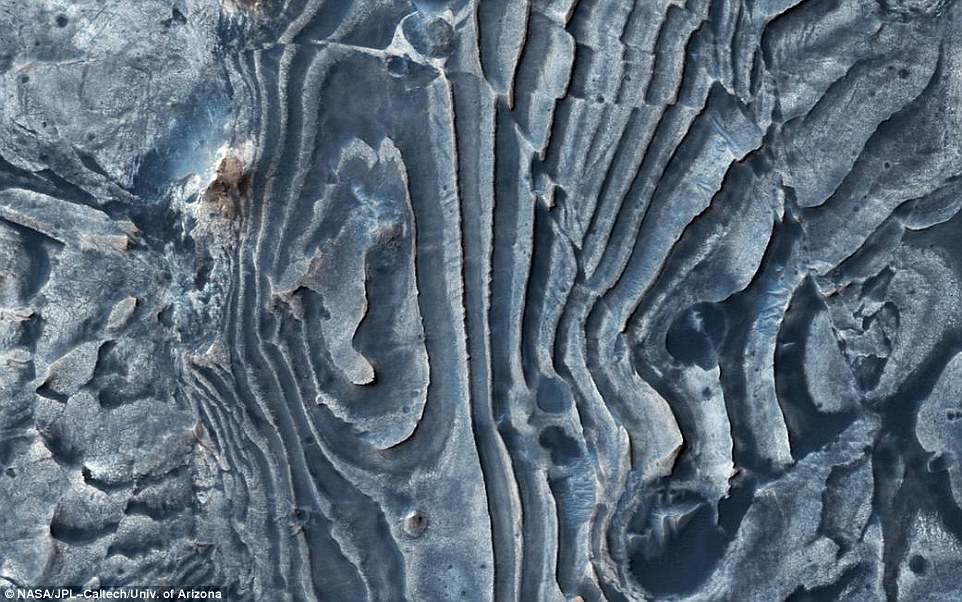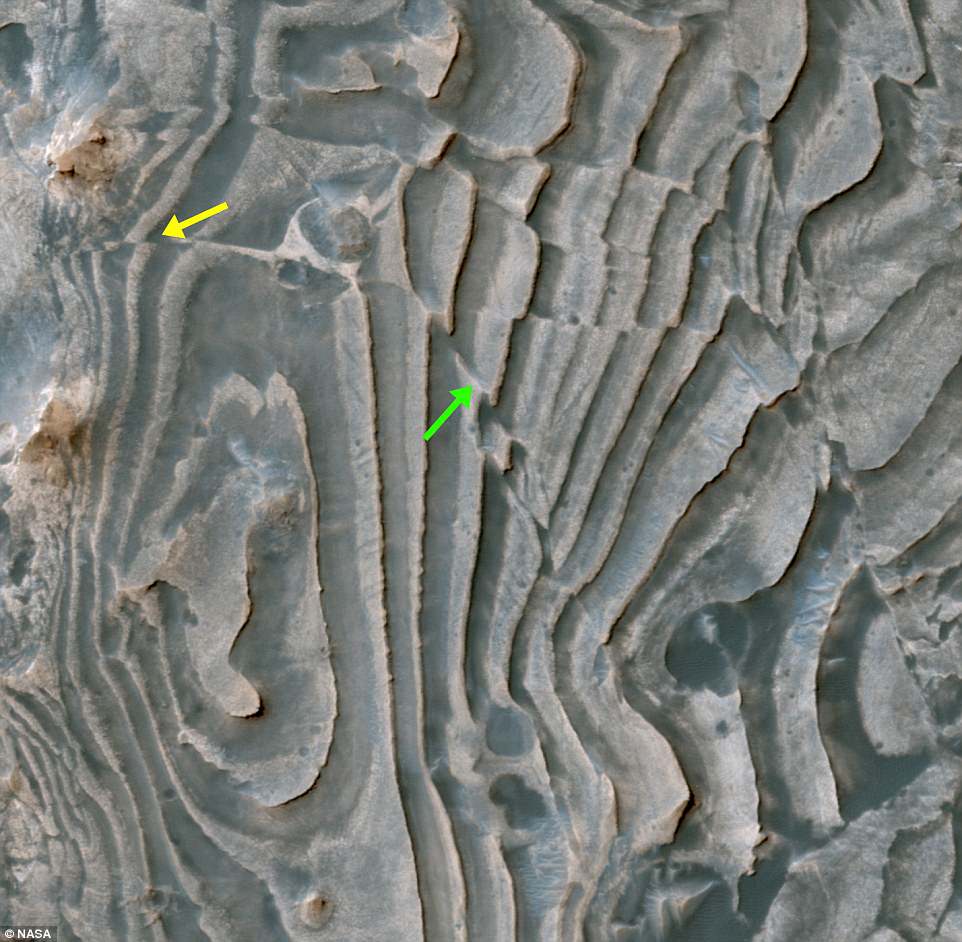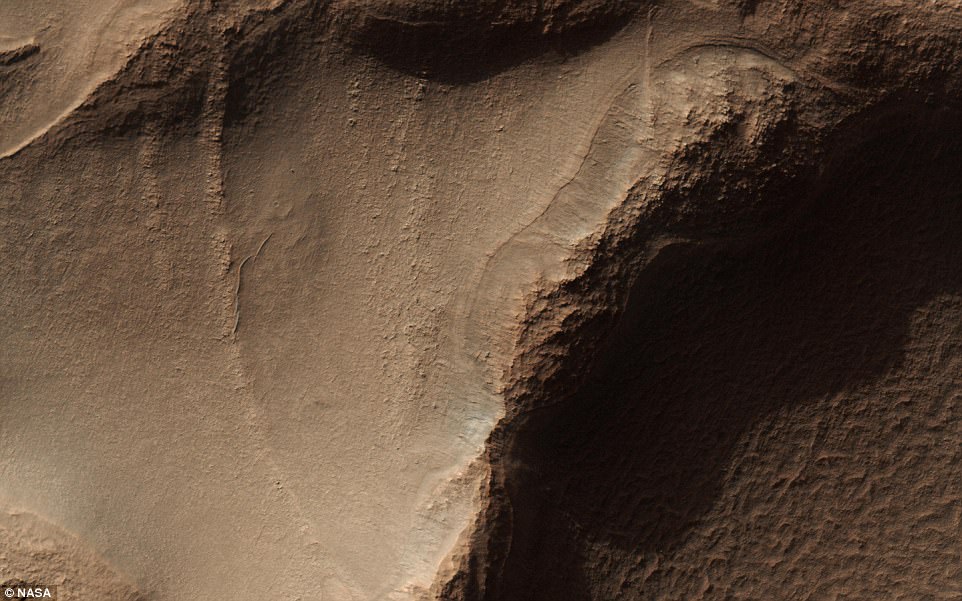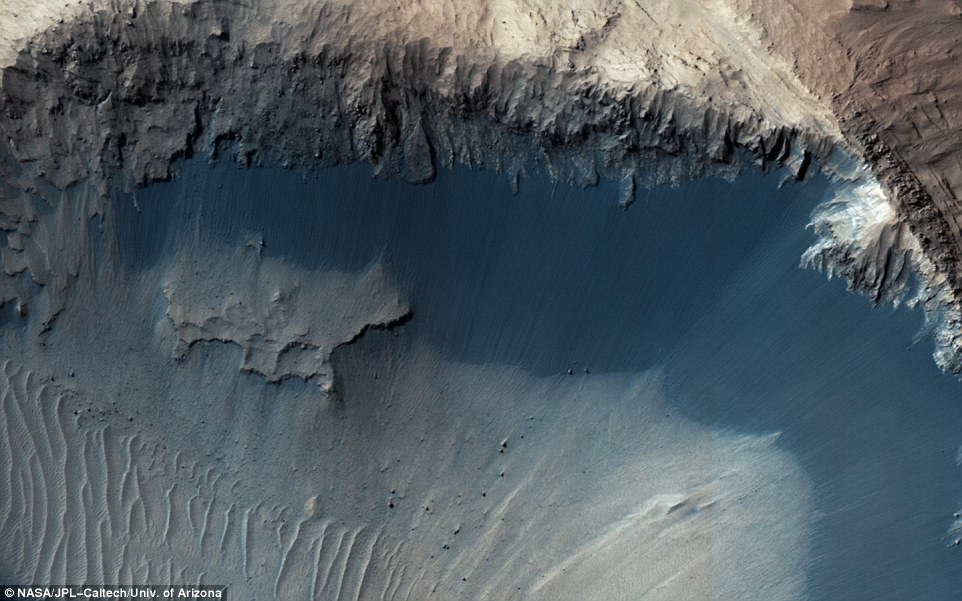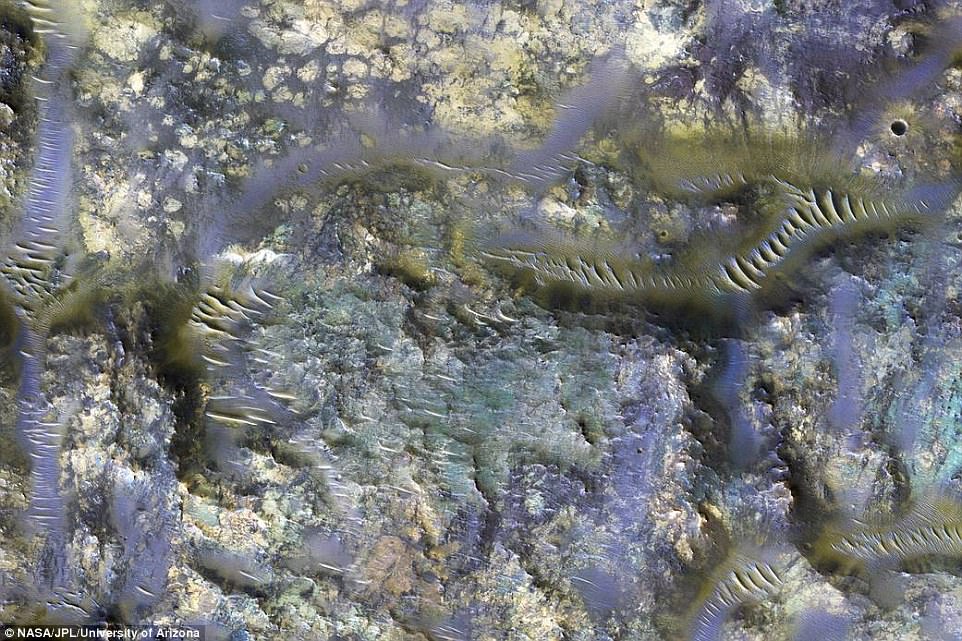خلال تصفحه للدفعة الأولى من الصور التي التقطتها المركبة كيوريوسيتي عبر آلة التصوير (MAHLI) في عام 2018, كان الباحث (باري ديغريغوريو ) يبحث في كون كيوريوسيتي قد عثرت على بنى أحفورية على المريخ، ديغريغوريو هو باحث في مركز باكنغهام لعلم الأحياء الفلكية في المملكة المتحدة ومؤلف للكتابين “المريخ: الكوكب الحي” و “ميكروبات المريخ”.
ويضيف ديغريغوريو قائلًا: (إنها تشبه بشكلٍ كبير الأحفوريات الخاصة بالعصر الاوردوڤيشي والتي قمت بدراستها في الأرض، ولكن ما هي التفسيرات الجيولوجية التي ستقدمها وكالة ناسا في حال لم تكن هذه الأشكال أحفوريات).
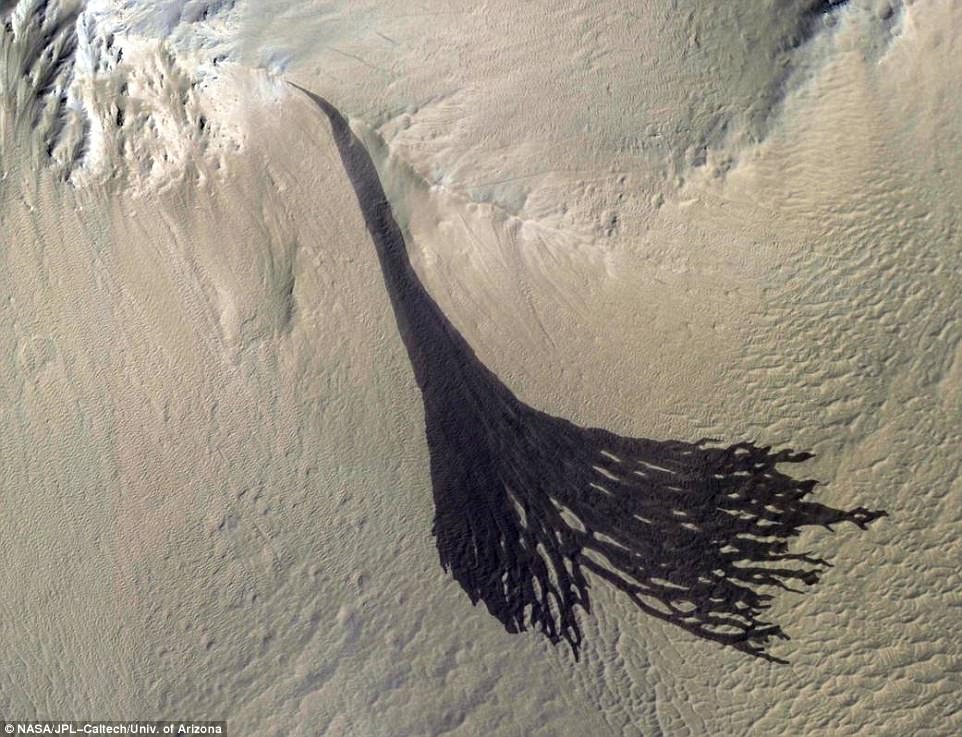
وذكر (فاسافادا) أن تلك الظواهر المثيرة صغيرة جدًا، ربما تكون عرضها ملليمتر أو اثنين (0.04 إلى 0.08 بوصة) بينما قد يصل طولها إلى 5 ملم (0.2 بوصة)، لذلك قال: (إنها صغيرة جدًا).
وقد تم رصد هذه الأشياء في البداية في صورة كانت بالأبيض والأسود، حيث أجبرت هذه الأشياء فريق علماء مهمة كوريوسيتي كي يفحصوها عبر آلة التصوير (MAHLI) وهي كاميرا تصوير بالألوان ويمكن أن تغير تركيز العدسات وهي مثبتة على ذراع المركبة.
وقال فاسافادا: (لقد كانت هذه الأشياء فريدةً بما فيه الكفاية والتي لم نكن نعرف من قبل أنها موجودة، وهو ما دفعنا للعودة إليها وفحصها من جديد).
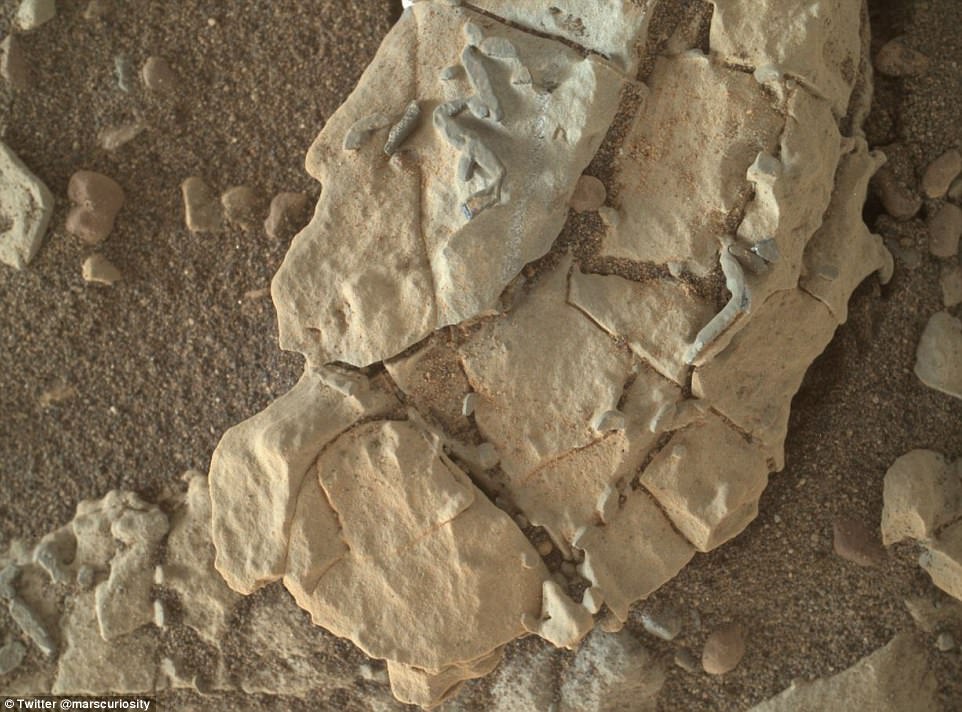
يقول فاسافاد: (لم نحكم عليها بعد) ويضيف قائلًا (لكننا بالتأكيد لا نرغب بالإسراع لاعتماد تفسيرنا الأول).
وبنظرة قريبة لهذه البنى تبين أن لديها أبعاد عديدة، مما يعني أنها مربتطة بكريستالات في الصخور، وربما تكون (قوالب من الكريستال) والتي وجد شبيهًا لها على الأرض، ويضيف “فاسافاد” بأنه عادة ما يؤدي ذوبان الكريستال في الصخور إلى ظهور قوالب من الكريستال.
ويبقى ذلك مجرد احتمال، حيث يشرح فاسافاد ذلك بقوله ???? إذا وجدنا العديد من هذه القوالب، فإننا سوف نقول بأن آلية ما هامة تجري في منطقة فيرا روبين ريدج).
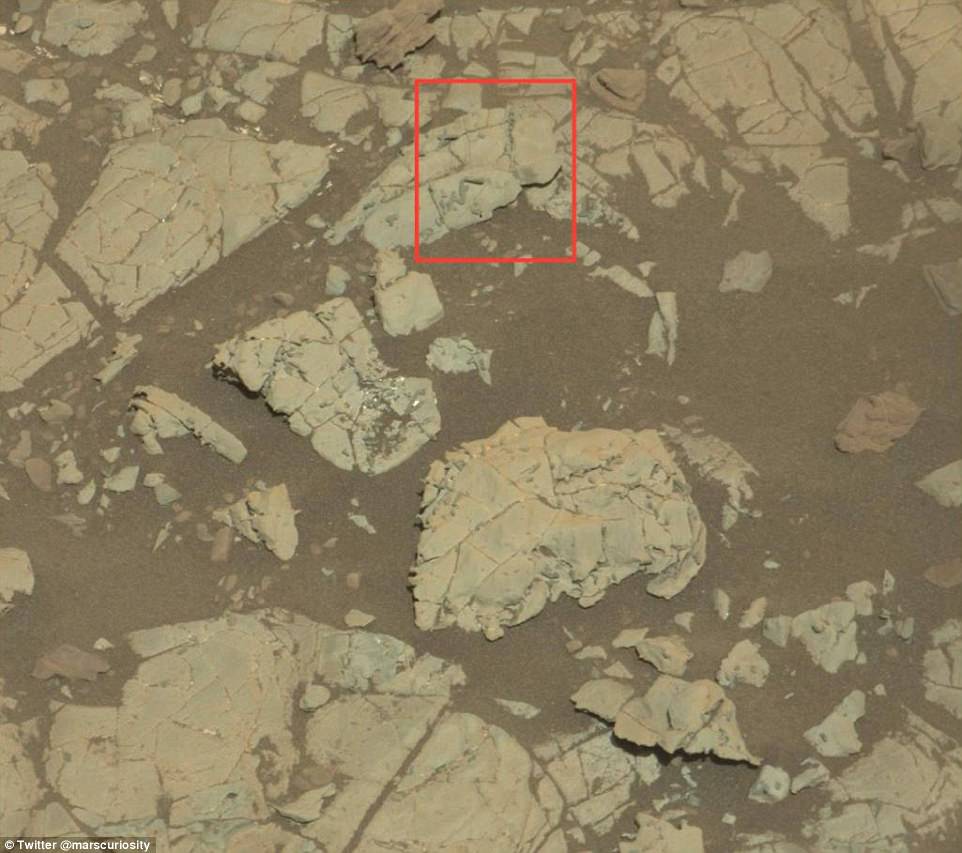
وقال “فاسافاد” بأن فريق مهمة كوريوسيتي يجري نقاشًا حول البنى الجديدة محاولين معرفة إلى ماذا تشير هذه البنى.
وفي النهاية هل من الممكن للروبوت الموجود في المريخ أن يفرق بين عمليات تشكيل الكريستال وبين العمليات البيولوجية؟
وقال “فاسافاد”: (إنه من الصعب علينا ونحن على الأرض أن نميز بين هاتين النظريتين بدون أن نضع هذه الأشياء داخل المختبر ونبحث عن وجود للمواد العضوية) ويضيف قائلًا ???? نحن بالفعل لدينا قابلية محدودة لكي نفهم فيما إذا كانت هذه الأشياء عضوية أم لا).
وفي الوقت نفسه فإننا باستخدامنا للصور التي التقطت عبر آلة التصوير (MAHLI) جنبًا إلى جنب مع الأداتين (ChemCam) للتحليل الكيميائي و (APXS) للتحليل بأشعة أكس في المركبة كوريوسيتي سنتمكن من فحص طبيعة هذه البنى.
